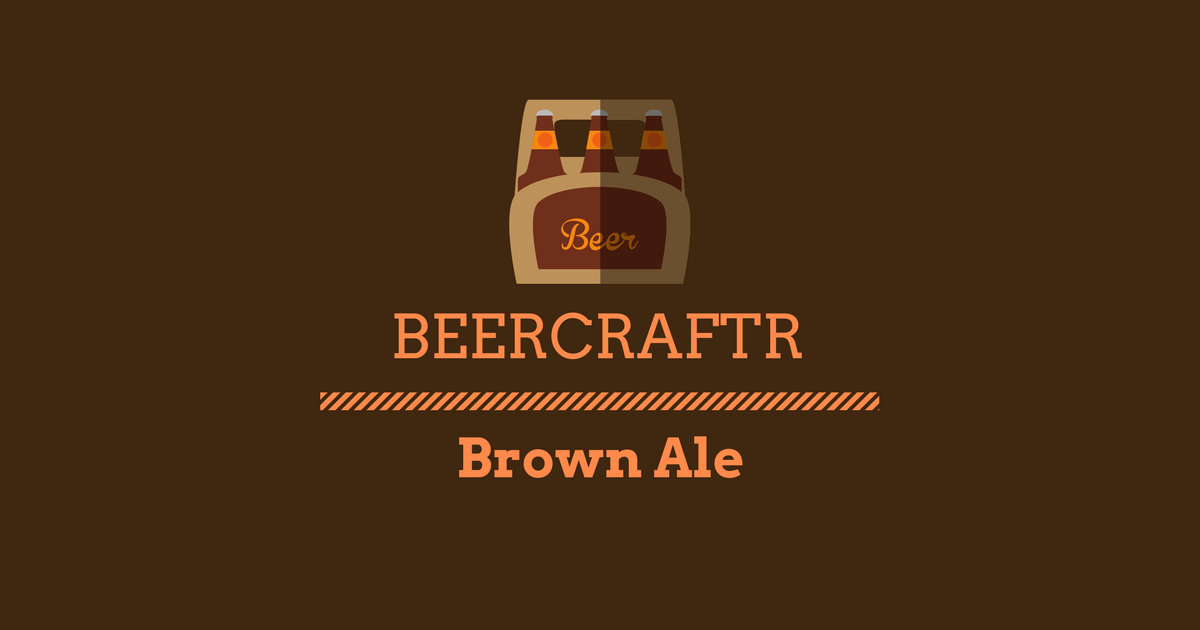
Brown ale is such a broad range that one recipe can’t really do the style justice. It remains, in my view, one of the most underrated styles out there.
The term itself isn’t particularly exciting. “Brown Ale”. As the Oxford Companion to Beer points out, that’s not much more useful than the term “red wine.” This is especially true when you consider that before the 1700s, most beers would have been brown—hence why pale ales would eventually become a huge hit.
As many of the beer styles we enjoy today, this one has its origins in England. Unsurprisingly, there different English Brown Ale styles within this family. Southern English tends to be on the sweet side, carries a malty and caramel finish, and rarely exceeds an ABV of 4.2%. By comparison, Northern English (think Newcastle) hovers around the 5% ABV and is relatively dry. You’ll find the Northern version below.
Go ahead and brew this, and then savour it. It’s an overlooked beer style that deserves a little more love and attention.
Recipe Profile
- Method: 1 gallon BIAB (Brew-in-a-bag), single stage
- Target OG (Original Gravity): 1.048
- Target FG (Final Gravity): 1.014
- Bitterness (IBUs): 22
- Estimated ABV: 4.5%
- Boil: 90 minutes
Ingredients
- 1 lbs 4 oz UK Pale Malt (2 row)
- 8 oz Caramel Malt (30L)
- 1.5 oz Chocolate Malt
- 0.20 oz Fuggles Hops at 90 minutes
- 0.30 oz Goldings, East Kent Hops at 5 minutes
- British Ale II (Wyeast 1335)
The Mash
- Bring 10.5 litres of water to a temperate of 162°F. Add your grains and give everything a good stir until the whole thing looks a bit like oatmeal. Shut off the heat, cover with a lid, and let it steep at 156°F for 60 minutes.
- Then you need to “mash out.” You put the heat back on, and raise the temperature to 168°F (75.6°C) and keep stirring for 7 minutes.
- Remove the grains and prepare for the boil. If you’re using a bag, just pull it out and let it drip near-dry above the pot. If you’re using a colander, strain to remove the grains, preserving the wort, which you’ll add back to the pot.
- Check that your gravity is on track and correct it, if needed. You need 63 gravity points for this recipe, and our target post-boil volume is 1.3 gallons.
The Boil
- Start the boil by bringing your wort up to a boil. Once boiling, start your timer. Add your bittering hops, as prescribed above.
- Meanwhile, prepare your sanitizer solution.
- Just before the boil is complete, make an ice bach in your kitchen sink. Load it up with as much ice and cold water as you can. Once the boil is over, transfer your pot to the sink to cool your wort to pitching temperature, as prescribed on the yeast pack. Remember to sanitize your thermometer every time you check the temperature.
- Meanwhile, thoroughly clean and sanitize your carboy, screw cap, airlock, funnel, and strainer/colander. You want everything to be ready to go once the wort is at the right temperature.
- Once the wort is at pitching temperature, transfer it to the carboy by passing it through a strainer overtop the funnel. Do not fill the carboy higher than the one-gallon mark.
- Aerate the wort. Cover the fermenter with a screw cap and gently rock the carboy back and forth for a few minutes to mix in some air.
- Pitch the yeast! Use sanitized scissors to cut open the package and pour in only half of the yeast.
- Seal the carboy by filling the airlock with sanitizer. Fit it in the screw cap. Move the carboy to a dark spot, free of the home’s daily commotion for at least 14 days (but ideally not more than 21).
Bottling Day
- Move the carboy to the countertop, if it wasn’t already there. If the wort got lots of movement during transfer, let it sit so that any stirred-up yeast has a chance to re-settle.
- Sanitize everything that will come in contact with the beer: bottling bucket, auto-siphon, tubing, filler, bottles, and bottle caps.
- Dissolve 0.59 oz (17g) corn sugar in enough boiling water to dissolve it. Add the dissolved sugar solution to your sanitized bottling bucket.
- Fill your auto-siphon and hose with sanitizer before submerging in the carboy. Transfer the solution to a spare container until the beer has completely replaced all the sanitizer in the tubes. Now you can place the end with the bottle filler in the bottling bucket, which should also be on the floor and gently transfer the beer from the carboy to the bucket.
- Transfer all the liquid up and the point where it reaches the sediment. Leave the sediment in the carboy.
- Now, move the bottling bucket to the counter and siphon the beer quietly into each bottle. When the liquid gets to the very top of the bottle, remove the bottle filler, which will leave the perfect amount of headspace at the top of the bottle.
- Cover each bottle with the sanitized caps and cap them into place, or secure your sanitized swing-top caps if using those.
- Store the bottles upright in a quiet, dark corner at 65F (18.5C) or so.
- Wait 30 days, if you can. If you’re way too curious (I can’t blame you!) try and hold out for 14 days. If you absolutely can’t wait, you can try after 7 days, but the beer really needs at least 14 days to condition.

Leave a Reply